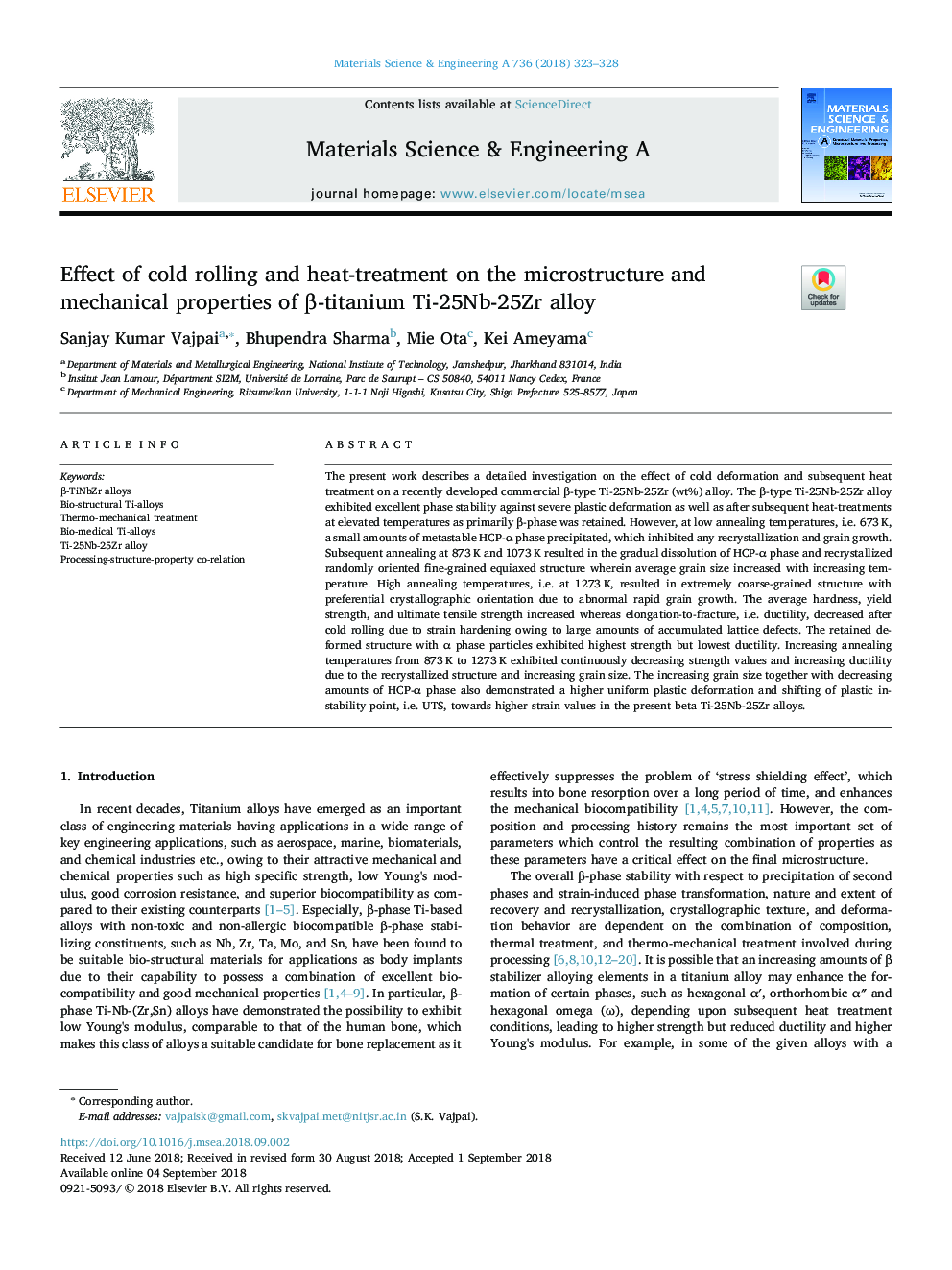| Article ID | Journal | Published Year | Pages | File Type |
|---|---|---|---|---|
| 10142035 | Materials Science and Engineering: A | 2018 | 6 Pages |
Abstract
The present work describes a detailed investigation on the effect of cold deformation and subsequent heat treatment on a recently developed commercial β-type Ti-25Nb-25Zr (wt%) alloy. The β-type Ti-25Nb-25Zr alloy exhibited excellent phase stability against severe plastic deformation as well as after subsequent heat-treatments at elevated temperatures as primarily β-phase was retained. However, at low annealing temperatures, i.e. 673â¯K, a small amounts of metastable HCP-α phase precipitated, which inhibited any recrystallization and grain growth. Subsequent annealing at 873â¯K and 1073â¯K resulted in the gradual dissolution of HCP-α phase and recrystallized randomly oriented fine-grained equiaxed structure wherein average grain size increased with increasing temperature. High annealing temperatures, i.e. at 1273â¯K, resulted in extremely coarse-grained structure with preferential crystallographic orientation due to abnormal rapid grain growth. The average hardness, yield strength, and ultimate tensile strength increased whereas elongation-to-fracture, i.e. ductility, decreased after cold rolling due to strain hardening owing to large amounts of accumulated lattice defects. The retained deformed structure with α phase particles exhibited highest strength but lowest ductility. Increasing annealing temperatures from 873â¯K to 1273â¯K exhibited continuously decreasing strength values and increasing ductility due to the recrystallized structure and increasing grain size. The increasing grain size together with decreasing amounts of HCP-α phase also demonstrated a higher uniform plastic deformation and shifting of plastic instability point, i.e. UTS, towards higher strain values in the present beta Ti-25Nb-25Zr alloys.
Keywords
Related Topics
Physical Sciences and Engineering
Materials Science
Materials Science (General)
Authors
Sanjay Kumar Vajpai, Bhupendra Sharma, Mie Ota, Kei Ameyama,
